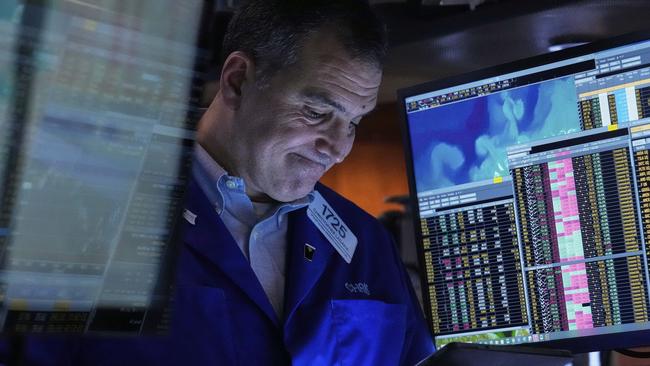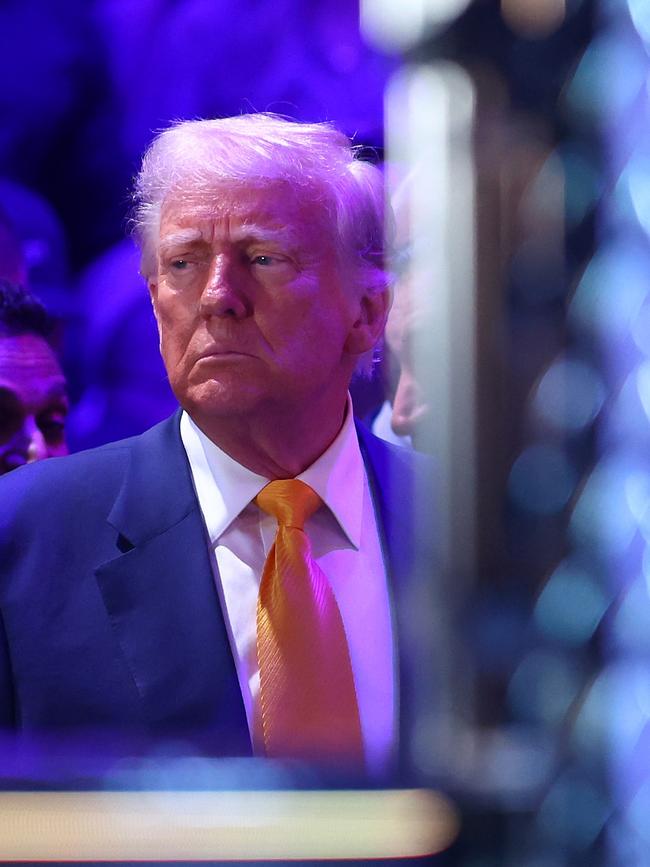
That’s rapidly becoming a consensus view among economists and global financial markets, sparking a concerning sell-off in US stocks, US treasuries and the US dollar in the past week, and leaving investors with few places to hide apart from gold, Japanese yen and Swiss francs.
Even though some economists dialled back their recession probability estimates after President Trump announced a 90-day “pause” of reciprocal tariffs that briefly took effect last week, others said a recession was likely if the US kept its 10 per cent baseline tariff for all countries and 145 per cent for China. Worse, they said the US faced a debilitating period and stagflation and permanent reputational damage.
The shift came as a sell-off in traditional US safe havens – including the greenback and Treasuries – indicated the meltdown in stocks after last week’s tariff announcements was causing a major liquidity squeeze and/or selling of US assets by foreign institutions like China.
“We are already seeing all the main hallmarks that tend to signal a recession is imminent: plunging consumer and business confidence, investment plans by large corporates being shelved, and unanticipated tighter financial conditions,” said Tim Toohey, head of macro strategy at Yarra Capital Management and a former chief economist at Goldman Sachs Australia.
In his view, permanent tariffs with retaliation will not only likely generate a recession, but leave financial markets increasingly concerned about a far more debilitating bout of stagflation.

While a series of trade deals could create the impression of a future elongated period of deal making that will help the US economy and repair investor sentiment, “there are limits”.
“Trump needs the tariff revenue, desperately,” Toohey said. “Simply put: no tariff revenue, no tax cuts – including the rollover of the existing tax cuts from Trump’s first term.”
His base case is after a series of concessions, Trump reverts to the 10 per cent universal tariff and 60 per cent tariff for China he campaigned on (after a series of concessions and deals are done). But, he worries that doesn’t seem to understand what a tariff is, who pays it and what it can realistically achieve in terms of reorganising the world economic order.
“There’s no economic theory that suggests fair trade utopia is achieved when all trade deficits to the US are eliminated,” Toohey said. “It is beyond stupid to suggest that the supplier of a good that you desire to purchase should buy the exact equal amount of goods from you.”
The aim is clearly just to raise revenue and contain China and its manufacturing proxies in the region.
Trump and his team clearly believe that if they can tilt relative competitiveness enough then they will drive a return to US manufacturing dominance.
But Toohey says the only way that Trump’s policies will see large-scale reshoring is on the assumption of no retaliation and on an assumption of fixed exchange rates.
“The idea that China will cede its manufacturing dominance and not retaliate is frankly pretty silly,” he said. “China exports to lots of different countries. The US is large, but it’s a declining share.
“Even if China does eventually agree to a higher tariff, which Trump will claim as a victory, they will merely allow their currency to depreciate and offset the impact.”
His concern is that the net gain for the US will “likely be zero or less, especially once reputational damage and geopolitical risks are included”.
According to Saul Eslake, a former chief economist at ANZ Bank, Trump’s aim of getting a massive amount of tax revenue from tariffs and also prompting massive on-shoring of manufacturing is nonsensical. Worse, the US is committing “incredible self-harm”, akin to Brexit in the UK.

In his view the damage to its “brand” will likely be permanent in terms of the risk premiums that offshore investors will demand for holding US assets.
“What we’re talking about here is America’s status as a safe haven,” he said.
“Normally in periods of heightened global uncertainty the US dollar goes up and bond yields go down, even when the US itself is the source of the uncertainty, as we saw in the GFC.”
The US dollar has fallen about 3 per cent in the past week and 9 per cent since Trump’s inauguration.
The US 10-year bond yield was up 46 basis points on Friday after falling 90 basis points since inauguration day.
“The opposite has occurred in the circumstances and what that tells you is that the US is losing some of its safe-haven status. It would be an exaggeration to say that they’ve lost all, but it has lost some of its status as a safe haven and I would say that’s probably irrecoverable,” Eslake said.
GSFM investment and former BlackRock head of fixed income, Stephen Miller, said protectionism is “unambiguously bad” for the US economy and a recession this year is “more than likely”.
“Who knows where we’re going to land with the chaos that seems to mark this [White House] administration, but I think the damage has been done and a recession is more than likely.
“It’s not just tariffs but also immigration, particularly as it applies to skilled immigration.”






Donald Trump’s aim to simultaneously fix the US budget deficit and reclaim manufacturing market share with tariffs is not only impossible, it risks causing a recession.